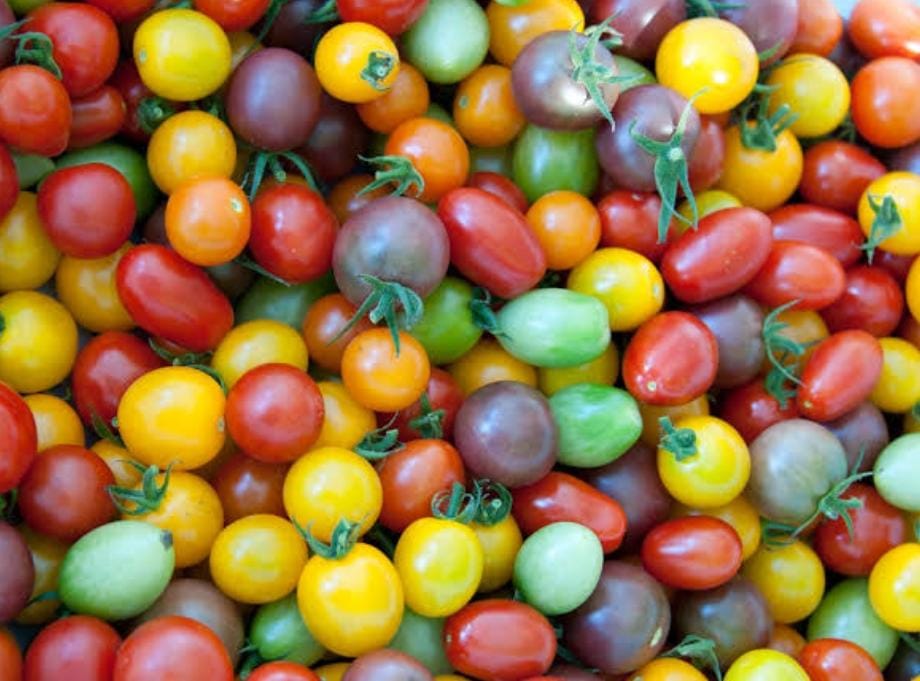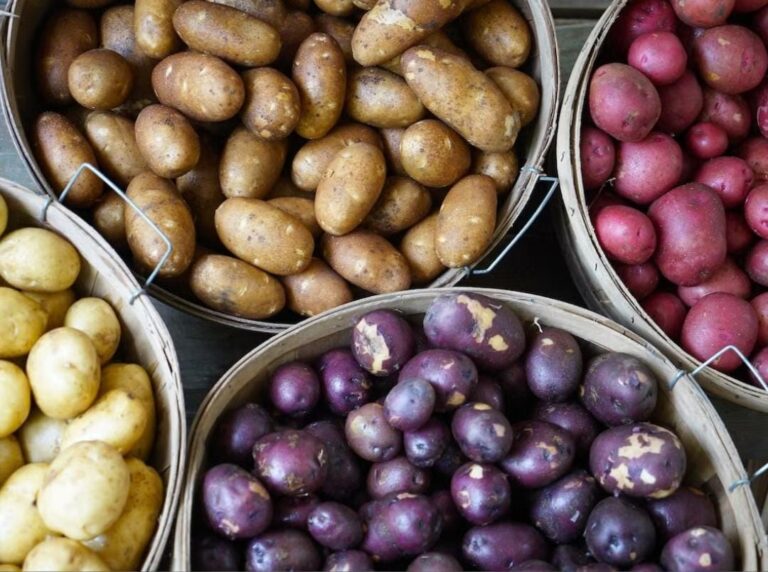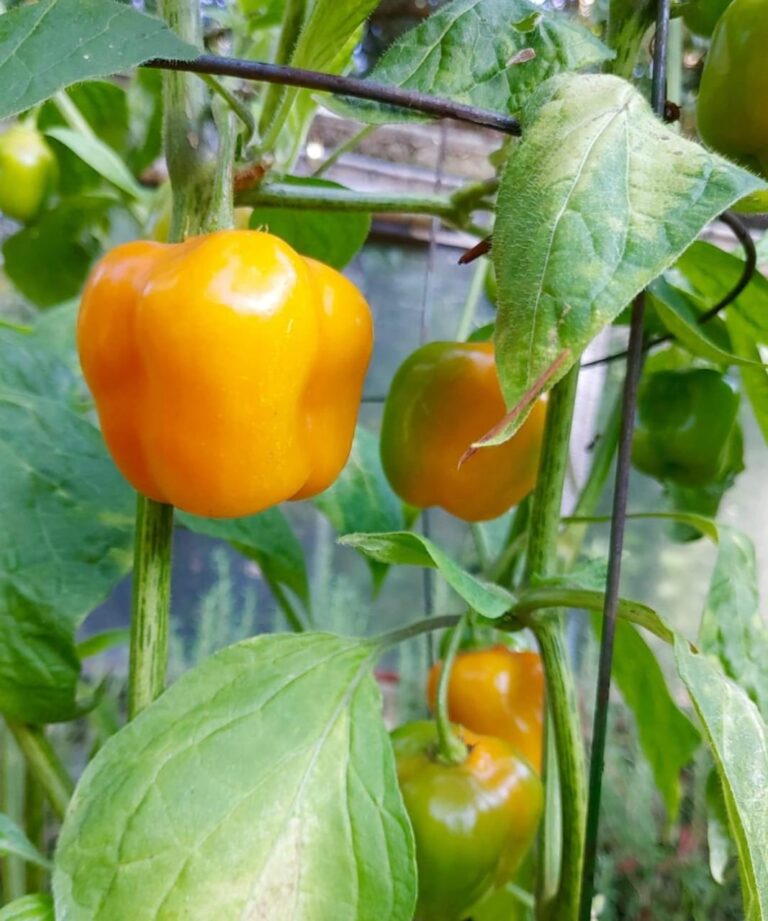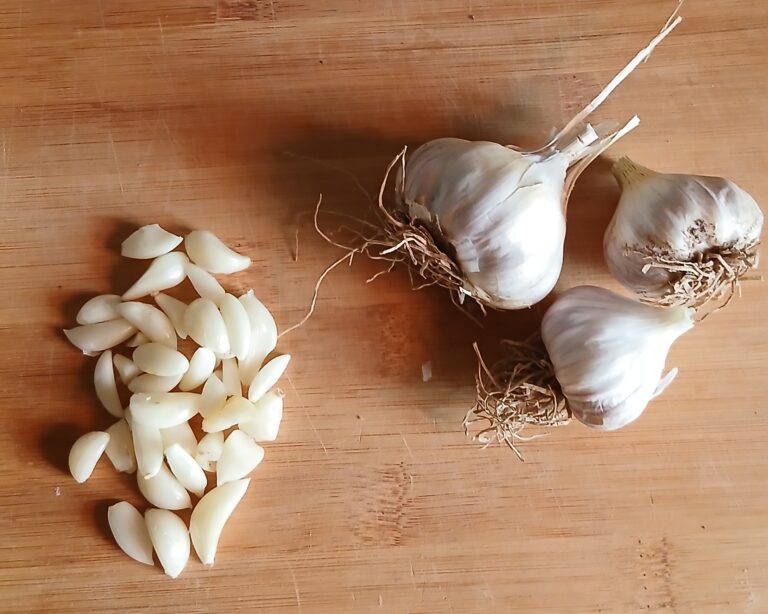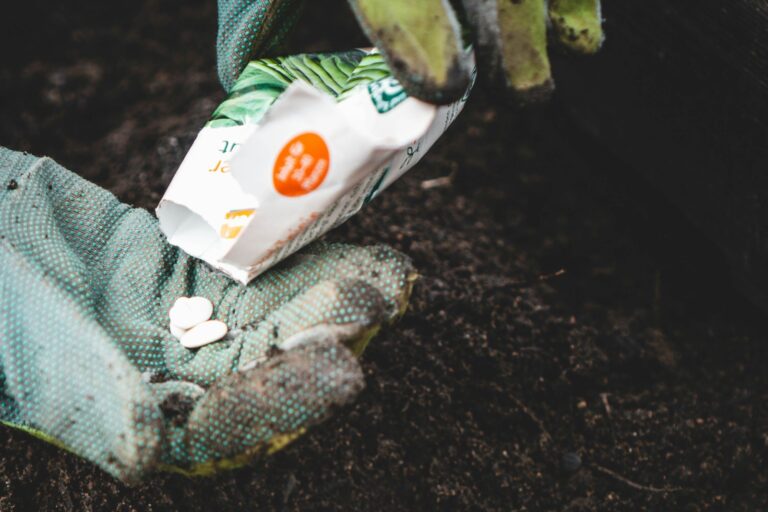Cherry Tomatoes: 5 Exclusive Culinary Uses
Introduction
Cherry tomatoes, with their jewel-like look and rich flavor, are more than simply a gorgeous garnish for salads and snacks. These tiny fruits contain an incredible amount of nutrition, intriguing biology, and a history that ties ancient civilizations to modern kitchens. Let’s examine the science behind cherry tomatoes, including their nutritional profile, botanical features, history, production techniques, and culinary versatility, while also acknowledging their significance to human health and culture. We have already discussed tomatoes in previous blogs. We also did a tomato series on our YouTube channel. I hope this will be helpful. Your feedback would be appreciated.
Origins and History
These tomatoes’ origins can be traced back thousands of years to the Andean areas of South America, where wild ancestors of the modern tomato thrived. Cherry tomatoes, also known as Solanum lycopersicum var. cerasiforme, are a subspecies of the common tomato. Early evidence suggests that they were farmed as early as 500 BCE in Peru and northern Chile, where they were esteemed for their flavor and versatility.
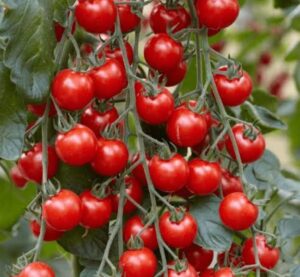
These little tomatoes spread from South America to Mexico, where they were tamed and became a mainstay of Aztec cuisine. When Spanish explorers arrived in the Americas in the sixteenth century, they returned to Europe with tomatoes, including cherry varieties. Tomatoes were initially produced as ornamental plants due to concerns about toxicity (since they are members of the nightshade family), but they eventually found their way onto European plates. By the 18th century, cherry tomatoes had migrated to the Mediterranean, where they were especially popular due to their appropriateness for warm conditions and sweet taste.
Botanical Characteristics
These beautiful tomatoes are botanically categorized as berries. Each fruit grows from a flower’s ovary and contains seeds enclosed in a fleshy pericarp. The plants are normally indeterminate, which means they grow and produce fruit throughout the season, while determinate (bush-type) types do occur.
Cherry tomatoes’ brilliant colors—ranging from basic red to yellow, orange, purple, and even black—are caused by a variety of pigments.
- Lycopene gives red tomatoes their vibrant color and has antioxidant effects
- Beta-carotene contributes to the orange color and acts as a precursor to vitamin A
- Anthocyanins in darker kinds offer significant antioxidant effects
These tomatoes have a thinner peel and a higher sugar-to-acid ratio than larger tomatoes, which contributes to their sweet, tangy flavor. They also have higher quantities of volatile aromatic chemicals, which increases their sensory appeal.
Nutritional Profile: Tiny but Mighty
They are nutrient-dense despite their modest size. Here’s an overview of what these fruits offer:
Vitamins and Minerals

- Vitamin C is essential for collagen formation, immunological function, and antioxidant protection. Just a handful of cherry tomatoes meets a major amount of your daily needs
- Vitamin A: In the form of beta-carotene, it promotes vision, skin health, and immunity
- Vitamin K1 is essential for blood coagulation and bone health
- Potassium helps control fluid balance, nerve messages, and muscle contractions
Phytochemicals in Cherry Tomatoes
- Lycopene is well-studied for its ability to reduce oxidative stress and promote cardiovascular health
- Flavonoids and polyphenols: These bioactive substances may help to reduce inflammation and protect cells
Fiber
Cherry tomatoes are a nutritious addition to any diet, as they are rich in dietary fiber. This fiber plays a crucial role in promoting intestinal health by aiding digestion and preventing constipation. Furthermore, the fiber content contributes to a feeling of fullness, which can help in managing appetite and supporting weight control. Overall, incorporating cherry tomatoes into your meals not only enhances flavor but also supports digestive well-being and helps maintain a balanced diet.
Furthermore, they are low in calories and high in flavor, making them great for weight-conscious diets and healthy snacking.
Growing Cherry Tomatoes Successfully
Growing cherry tomatoes is both enjoyable and informative, providing insight into plant biology and environmental relationships.
1. Environmental Requirements
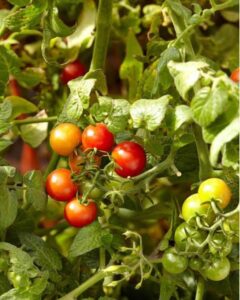
These tomatoes grow in full sun and require at least 6-8 hours of direct sunshine per day. They love well-drained, loamy soil rich in organic matter and thrive at temperatures ranging from 70 to 85°F (21 to 29°C).
2. Germination and Growth
Seeds germinate best at soil temperatures of 75°F (24°C) and emerge in 5-10 days. As the seedlings mature, they produce true leaves and should be replanted after the threat of frost has passed.
3. Pollination
Tomatoes are self-pollinating, although insect activity or gentle shaking might help promote fruit set. Greenhouses frequently employ bumblebees or mechanical help for this purpose.
4. Watering and Nutrients
Consistent watering is essential; inconsistent moisture might cause blossom-end rot or fruit breaking. Fertilizers rich in phosphorus and potassium but low in nitrogen promote vigorous flowering and fruiting.
5. Disease Resistance
Cherry tomatoes are more resistant to certain diseases than larger kinds. However, they are still susceptible to blight, wilt, and pests such as aphids and whiteflies. Crop rotation, correct spacing, and resistant cultivars all help to reduce these hazards.
Genetic Diversity and Breeding Innovations
These tomatoes have become the focus of breeding efforts to improve flavor, disease resistance, and shelf life. Wild relatives supply genetic material, which breeders use to introduce desirable features.
Hybrid cultivars, for example, have been produced to increase crack resistance and storage capacity. Research into heirloom varietals also preserves genetic diversity and distinct flavor qualities. Recent developments in genomic techniques and marker-assisted selection have accelerated the production of improved cherry tomato lines, ensuring long-term viability and adaptability to shifting climates.
Health Benefits Backed by Science
The high concentration of bioactive chemicals in cherry tomatoes results in significant health advantages supported by studies.
Cardiovascular Health
Lycopene and potassium are like a dynamic duo for your heart health! They work together to lower blood pressure, improve your lipid profiles, and reduce oxidative stress on your blood vessels. By incorporating these powerful nutrients into your diet, you can give your cardiovascular system the love and support it needs to thrive.
Cancer Prevention
Antioxidants included in these tomatoes may help neutralize free radicals, potentially lowering the risk of certain malignancies. Lycopene is notably connected with prostate health.
Eye Protection
Beta-carotene and lutein are fantastic allies for your eyes! These powerful nutrients not only promote retinal health but also play a crucial role in safeguarding against age-related macular degeneration, helping you maintain your vision as you age. Embrace these vibrant compounds for a brighter future for your eyesight!
Immune Support
Vitamin C is a powerhouse when it comes to boosting our immune defenses, but it’s not alone in the fight for better health! Other incredible phytonutrients also step into the ring with their anti-inflammatory properties, working alongside Vitamin C to keep our bodies in fighting shape. Embrace a colorful diet full of fruits and vegetables to harness the full spectrum of these health-boosting benefits!
Skin Health
Carotenoids are your skin’s best friend when it comes to battling UV damage! They enhance your natural glow and play a vital role in reducing the risk of photoaging. Embrace these powerful pigments to not only boost your attractiveness but also keep your skin looking youthful and vibrant!
Culinary Versatility

Cherry tomatoes are appreciated not just for their nutritional value, but also for their culinary versatility. Here are some unique ways they shine in the kitchen:
1. Fresh and Raw
The delightful sweetness and succulent texture of these fruits make them perfect additions to a variety of dishes. Their vibrant flavor enhances salads, providing a refreshing contrast to crisp greens and other ingredients. In salsas, they contribute a juicy burst that pairs beautifully with spicy and savory elements, elevating the overall taste profile. Additionally, they serve as a satisfying and nutritious snack on their own, offering a delicious way to satisfy one’s cravings while enjoying their natural goodness.
2. Roasted or Grilled
When exposed to heat, the natural sugars within the ingredients transform, resulting in a rich caramelization process. This not only intensifies their inherent flavors but also develops a savory-sweet profile that is both complex and satisfying. The interplay of heat brings out deeper, more nuanced taste notes, enhancing the overall sensory experience of the dish.
3. Sauces and Soups
The natural sugars present in these ingredients enhance the flavor profile of sauces, creating a rich and complex taste without the need for additional sweeteners. This depth of flavor allows for a more balanced and nuanced sauce, elevating the overall dish while maintaining a focus on wholesome ingredients.
4. Preserved
Sun-dried or pickled cherry tomatoes bring vibrant bursts of flavor to winter dishes, enhancing their taste and adding a delightful tang. The sun-drying process concentrates the tomatoes’ natural sweetness, creating chewy, flavorful morsels that can elevate salads, pasta, or even grain bowls. On the other hand, pickled cherry tomatoes offer a zesty contrast, with their tangy brine brightening up hearty winter recipes. Both options not only introduce a pop of color but also provide a unique depth of flavor that can transform a simple meal into something truly special.
5. Stuffed
Larger cherry varieties, such as Bing or Royal Rainier, can be carefully hollowed out to create a delightful vessel for various fillings. These sweet, plump fruits can be artfully stuffed with a range of flavorful ingredients, including creamy cheeses like goat cheese or ricotta, aromatic herbs such as basil or thyme, or even nutritious grains like quinoa or farro. The result is an elegant and visually appealing appetizer that combines the natural sweetness of the cherries with savory or earthy flavors, perfect for impressing guests at gatherings or special occasions.
Their vibrant colors enhance the visual appeal of dishes, delighting both the eye and the palate.
Tomatoes in Sustainable Systems
Cherry tomatoes can contribute to sustainable agriculture:
- They often require less water and chemical inputs than larger tomato types
- Their short growing cycle and plentiful fruiting make them ideal for urban gardening, vertical farming, and permaculture systems
- Growing them at home decreases the carbon footprint caused by transportation and packaging.
Furthermore, because cherry tomatoes produce a huge number of fruits per plant, they are highly effective at converting sunshine and nutrients into edible yield.
Significance in Scientific Discoveries
The common cherry tomato has also contributed to scientific research:
- Cherry tomatoes have been used as a model to study fruit ripening mechanisms, specifically ethylene signaling pathways
- A genetic study has investigated the effect of individual loci on fruit size and sweetness
- Tomatoes are frequently studied in plant-microbe interactions because of their economic and biological significance
These findings not only improve agricultural operations, but also deepen our understanding of plant physiology and development.
Heirloom vs. Hybrid

While hybrid cherry tomatoes dominate commercial production due to their homogeneity and robustness, traditional cultivars provide insight into past biodiversity. Heirlooms such as ‘Black Cherry’ and ‘Yellow Pear’ provide distinct flavors, forms, and colors while conserving genetic features that newer hybrids may lack.
Gardeners and chefs alike value heirlooms for their unique flavors, while hybrids remain the preferred choice when longevity and production are critical.
Psychological and Cultural Impact
These treasures contribute to psychological well-being and cultural traditions.
- Gardening and harvesting tomatoes can alleviate stress and provide a sense of accomplishment
- In Mediterranean cultures, cherry tomatoes are associated with summer feasts and family reunions
- In Japan, they are praised for their aesthetic beauty and serve as a culinary art in bento boxes.
Their broad appeal emphasizes their significance as a link between nature and human culture.
How to Select and Store?
When selecting cherry tomatoes, aim for those that are firm, smooth, and beautifully colored with no blemishes. They continue to ripen after harvest, so keep them at room temperature if they need to mature further. Unless they are really ripe and require extended storage, avoid refrigeration, which can reduce their flavor and texture.
Slow-roasting or sun-drying them is a good option for long-term storage because it amplifies their flavor and keeps them for months.
The Future in Agriculture

With continued research into drought tolerance, climatic adaptability, and improved nutrition, cherry tomatoes’ future seems promising. Scientists are looking into gene-editing methods to improve qualities such as sweetness, firmness, and resistance to disease. As worldwide awareness of healthy eating and sustainable agriculture rises, cherry tomatoes are expected to continue at the forefront of fresh product innovation.
Emerging initiatives include growing cherry tomatoes indoors under LED lights, producing biodegradable packaging adapted to their fragile nature, and even breeding varieties with unique flavor characteristics reminiscent of tropical fruits or herbs.
Conclusion
Cherry tomatoes represent the ideal combination of science, nature, and culture. Their brilliant colors and sweet-tart flavor make them a gastronomic joy, and their high concentration of minerals and antioxidants benefits human health in a variety of ways. Beyond the plate, they stimulate scientific inquiry, promote environmental sustainability, and connect us to old traditions.
Cherry tomatoes, whether grown in your backyard, picked at a farmer’s market, or enjoyed in a gourmet cuisine, invite you to taste the richness of the natural world with each bite. These tiny fruits serve as a reminder that wonderful things come in small, colorful packages.
By understanding the science and history of these tomatoes, we not only improve our diets but also strengthen our bonds with the biological and cultural legacy they represent. So, the next time you pop one in your mouth, realize that you’re savoring the result of centuries of evolution, human creativity, and nature’s amazing artistry.

